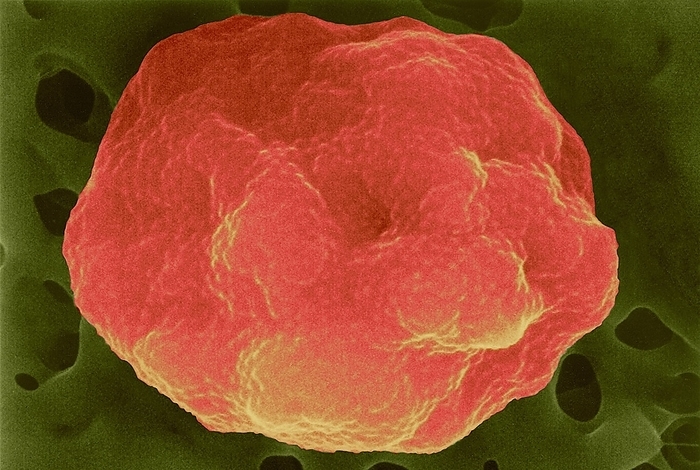
RM
Red blood cell infected with malaria parasite, SEM
Red blood cell (erythrocyte) infected with malaria parasite (Plasmodium falciparum), coloured scanning electron micrograph (SEM). The distinct knobs are characteristic of young developing plasmodial schizonts (Plasmodium falciparum) in the red blood cells. Malaria is caused by Plasmodium spp., protozoa. It is spread to humans by Anopheles species mosquitoes. The plasmodial parasite reproduces asexually in red blood cells significantly destroying many of them. Release of mature Plasmodium merozoites results in further infection and produces bouts of shivering fever (paroxysms) and sweating that may be fatal. Magnification: x4,000 when shortest axis printed at 25 millimetres.

More
Top Categories
